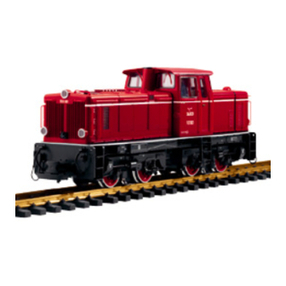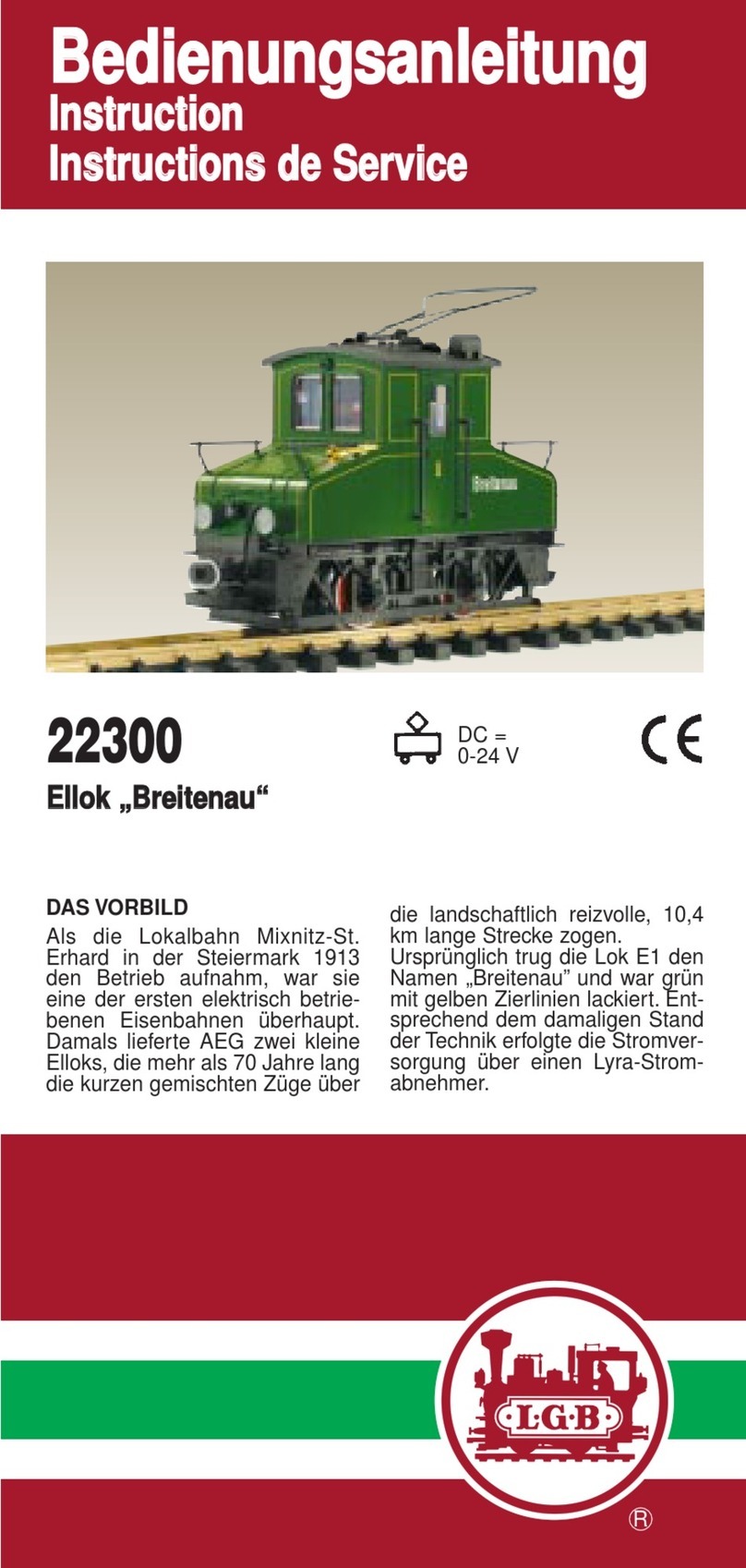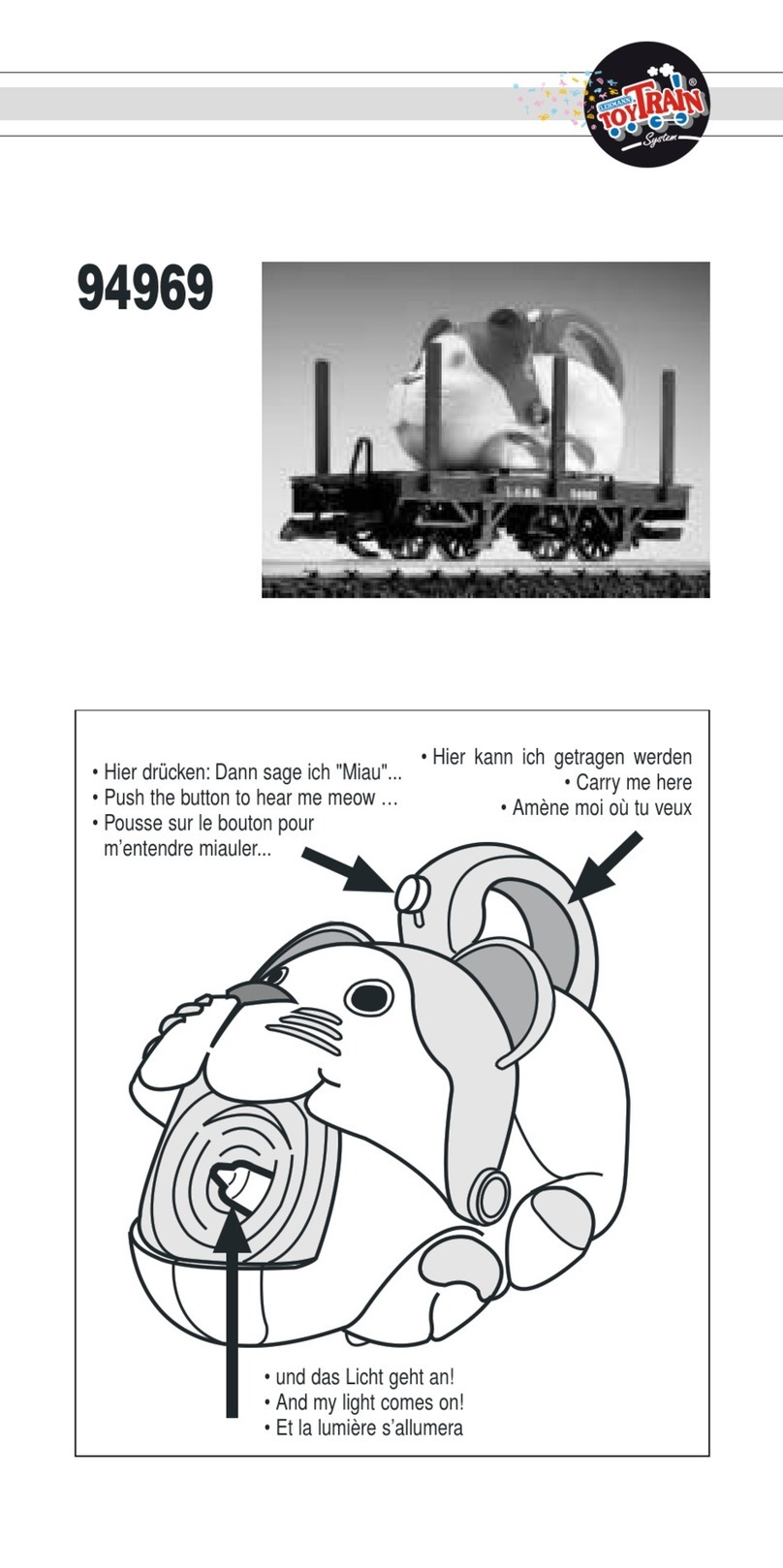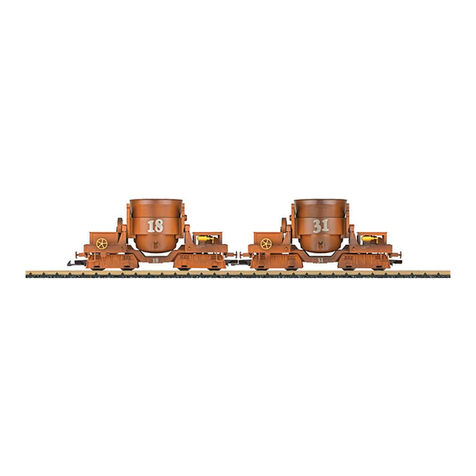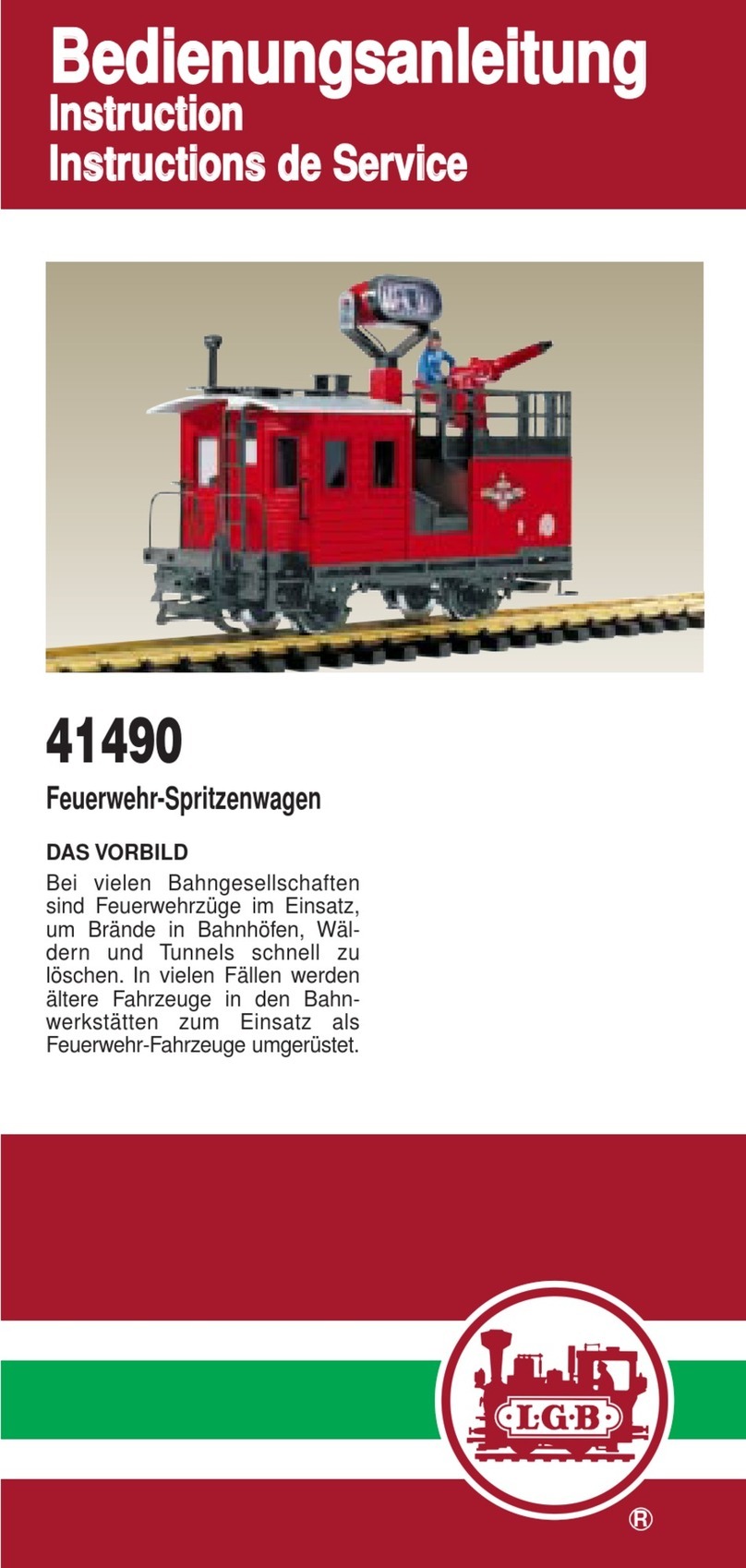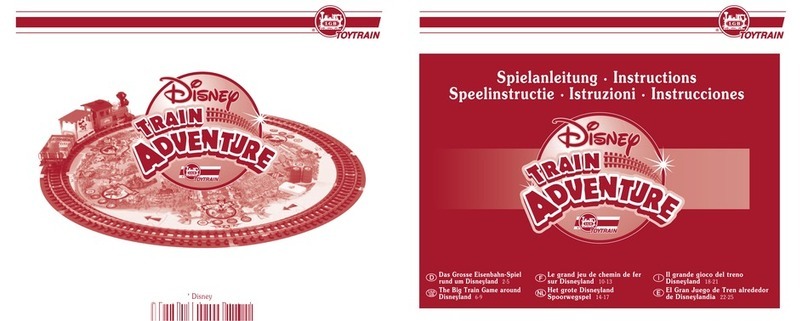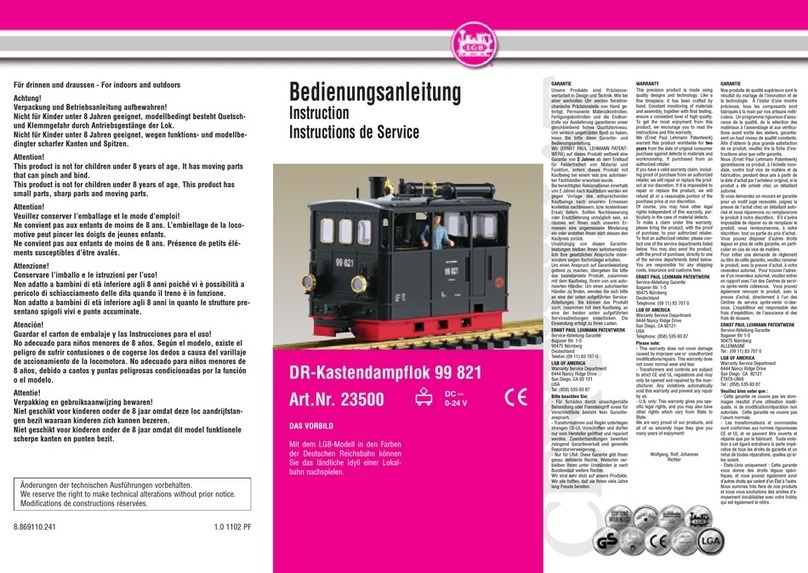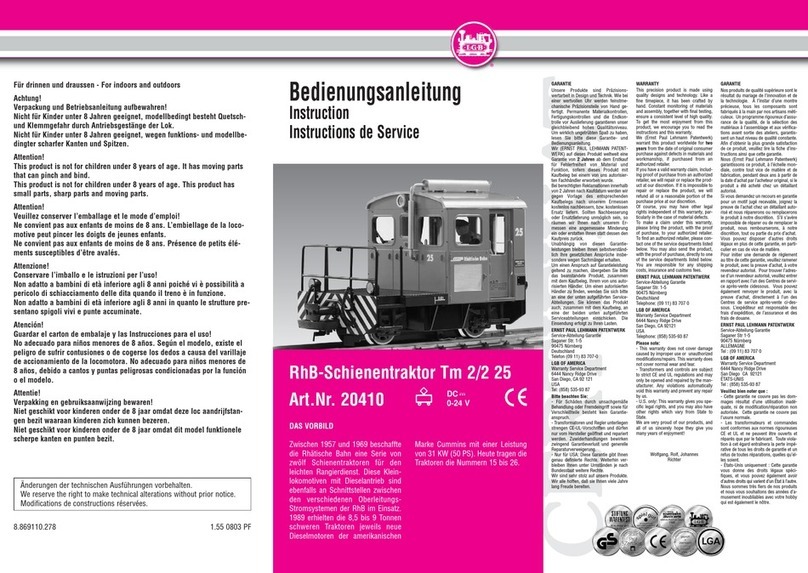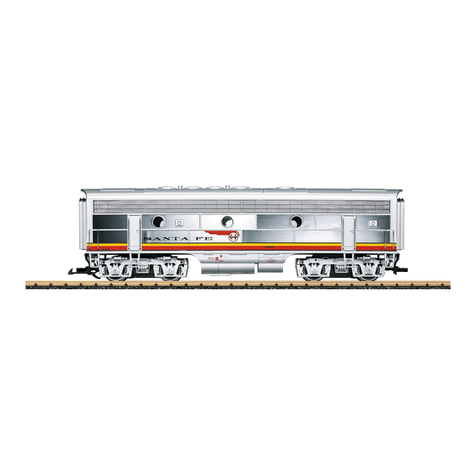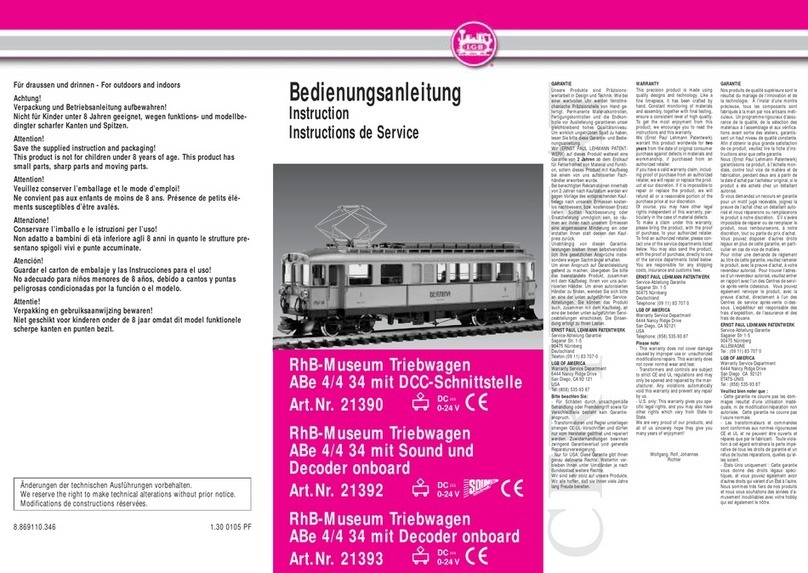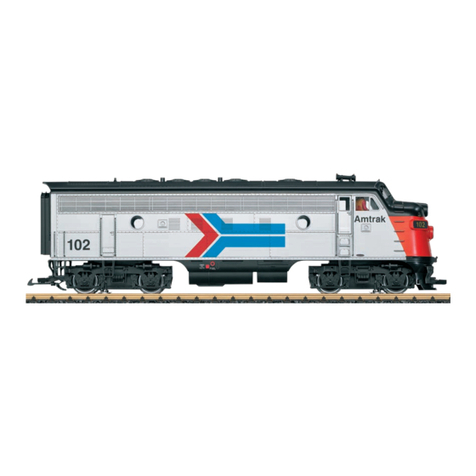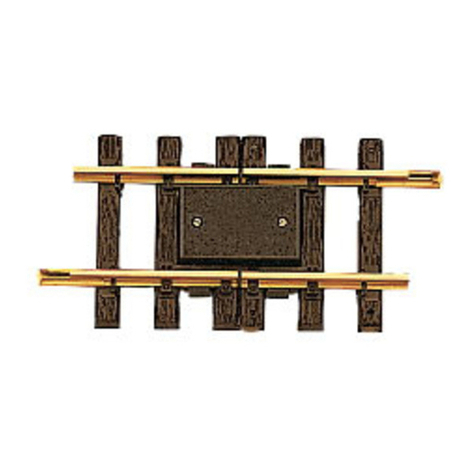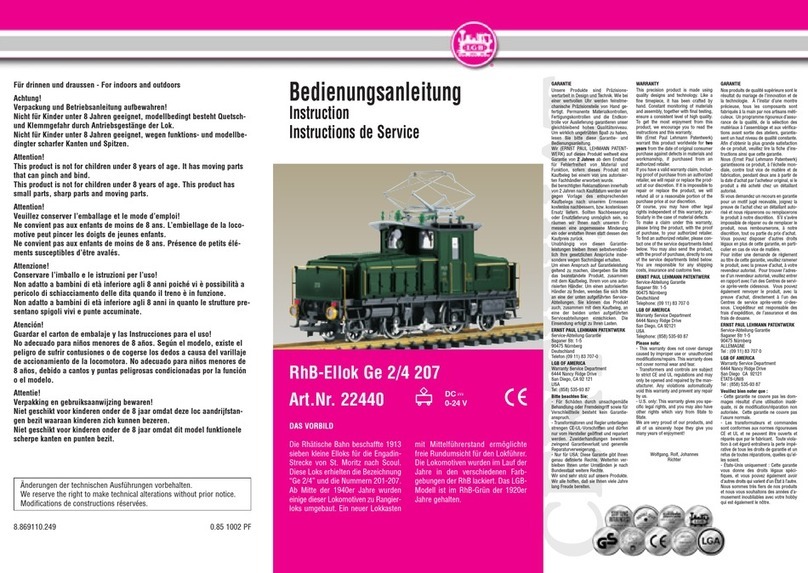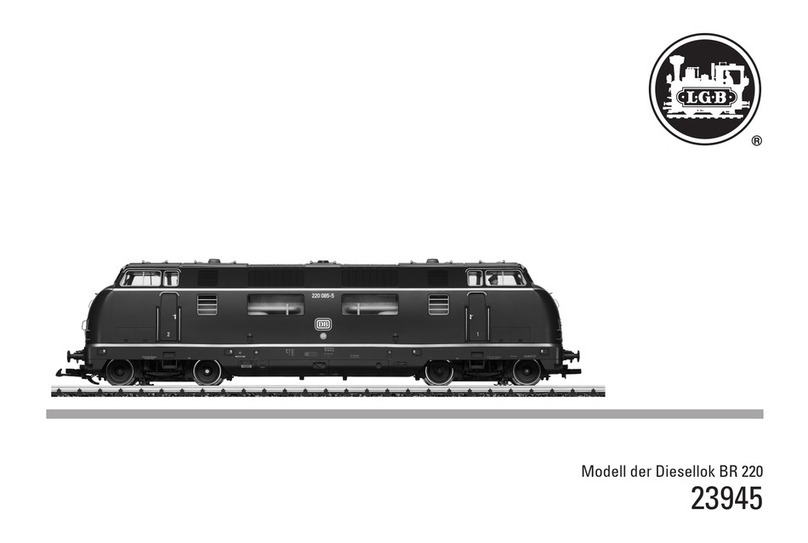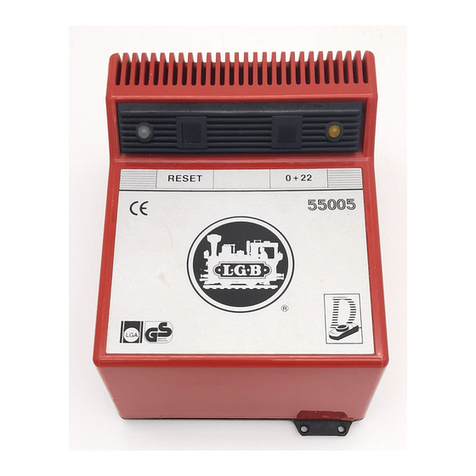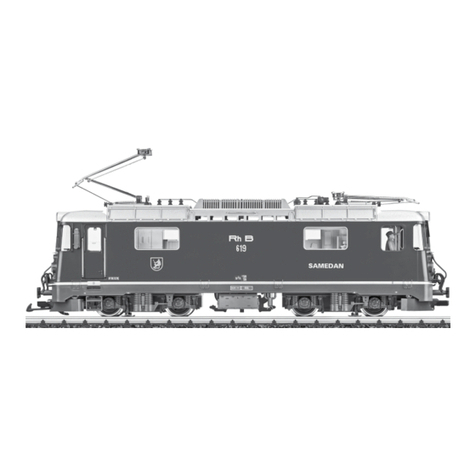4
Sicherheitshinweise
• Das Modell darf nur mit einem dafür bestimmten
Betriebssystem eingesetzt werden.
• Nur Schaltnetzteile und Transformatoren verwenden,
die Ihrer örtlichen Netzspannung entsprechen.
• Das Modell darf nur aus einer Leistungsquelle versorgt werden.
• Beachten Sie unbedingt die Sicherheitshinweise in der Bedienungsanleitung zu
Ihrem Betriebssystem.
• Nicht für Kinder unter 15 Jahren.
• Dieses Produkt enthält Magnete. Das Verschlucken von mehr als einem Magneten
kann unter Umständen tödlich wirken. Gegebenenfalls ist sofort ein Arzt aufzusu-
chen.
• ACHTUNG! Funktionsbedingte scharfe Kanten und Spitzen.
Wichtige Hinweise
• Die Bedienungsanleitung ist Bestandteil des Produktes und muss deshalb aufbe-
wahrt sowie bei Weitergabe des Produktes mitgegeben werden.
• Gewährleistung und Garantie gemäß der beiliegenden Garantieurkunde.
• Für Reparaturen oder Ersatzteile wenden Sie sich bitte an Ihren LGB-Fachhändler.
• Entsorgung: www.maerklin.com/en/imprint.html
Funktionen
• Das Modell ist für den Betrieb auf LGB-Zweileiter-Gleichstrom-Systemen mit
herkömmlichen LGB-Gleichstrom-Fahrpulten vorgesehen (DC, 0 – 24 V).
• Werkseitig eingebauter Multiprotokoll-Decoder (DC, DCC, mfx).
• Zum Einsatz mit dem LGB-Mehrzugsystem (DCC) ist das Modell auf Lokadresse 03
programmiert. Im Betrieb mit mfx wird die Lok automatisch erkannt.
• Radsynchroner Dampfausstoß
• Mfx-Technologie für Mobile Station/Central Station.
Name ab Werk: Mogul 50
• Die Funktionen können nur parallel aufgerufen werden. Die seriealle Funktionsaus-
lösung ist nicht möglich (beachten Sie hierzu die Anleitung zu Ihrem Steuergerät).
Allgemeiner Hinweis zur Vermeidung elektromagnetischer Störungen:
Um den bestimmungsgemäßen Betrieb zu gewährleisten, ist ein permanenter,
einwandfreier Rad-Schiene-Kontakt der Fahrzeuge erforderlich.Führen Sie keine
Veränderungen an stromführenden Teilen durch.
Betriebsartenschalter
Das Modell hat einen vierstufigen Betriebsarten-Schalter im Führerstand (Bild 1).
Pos. 0 Lok stromlos abgestellt
Pos. 1 – 3 Lokmotor, Beleuchtung und Sound eingeschaltet
Dampfentwickler
Im Analogbetrieb ist der radsynchrone Raucherzeuger aus Gründen des Leistungsbe-
darfs ausgeschaltet. Dieser kann durch Setzen des CV 13 von Wert 32 auf den Wert
96 eingeschaltet werden, das kann aber – je nach Stromversorgung – zur Beeinträch-
tigung der Fahreigenschaften bei sehr langsamer Fahrt führen.
Elektronischer Sound
Die Lok ist mit einem Lautstärkeregler ausgestattet (Bild 2).
Glocke und Pfeife können mit dem beiliegenden LGB-Sound-Schaltmagneten (17050)
ausgelöst werden. Der Schaltmagnet lässt sich zwischen die Schwellen der meisten
LGB-Gleise klipsen.
Der Magnet befindet sich seitlich versetzt unter dem eingeprägten LGB-Logo. Platzie-
ren Sie den Magneten auf einer Seite, um die Pfeife auszulösen, wenn die Lok diese
Stelle überquert. Bei Anordnung auf der anderen Seite ertönt die Glocke.
Multiprotokollbetrieb
Analogbetrieb
Der Decoder kann auch auf analogen Anlagen oder Gleisabschnitten betrieben wer-
den. Der Decoder erkennt die analoge Gleichspannung (DC) automatisch und passt
sich der analogen Gleisspannung an. Es sind alle Funktionen, die unter mfx oder DCC
für den Analogbetrieb eingestellt wurden aktiv (siehe Digitalbetrieb).
Die Eingebauten Sound-Funktionen sind ab Werk im Analogbetrieb nicht aktiv.
Digitalbetrieb
Der Decoder ist ein Multiprotokolldecoder. Der Decoder kann unter folgenden Digital-
Protokollen eingesetzt werden: mfx oder DCC.
Das Digital-Protokoll mit den meisten Möglichkeiten ist das höchstwertige Digital-
Protokoll. Die Reihenfolge der Digital-Protokolle ist in der Wertung fallend:
Priorität 1: mfx; Priorität 2: DCC; Priorität 3: DC
Hinweis: Digital-Protokolle können sich gegenseitig beeinflussen. Für einen stö-
rungsfreien Betrieb empfehlen wir, nicht benötigte Digital-Protokolle mit Configu-
rations Variable (CV) 50 zu deaktivieren. Deaktivieren Sie, sofern dies Ihre Zentrale
unterstützt, auch dort die nicht benötigten Digital-Protokolle.
Werden zwei oder mehrere Digital-Protokolle am Gleis erkannt, übernimmt der De-
coder automatisch das höchstwertige Digital-Protokoll, z.B. mfx/DCC, somit wird das
mfx-Digital-Protokoll vom Decoder übernommen.







